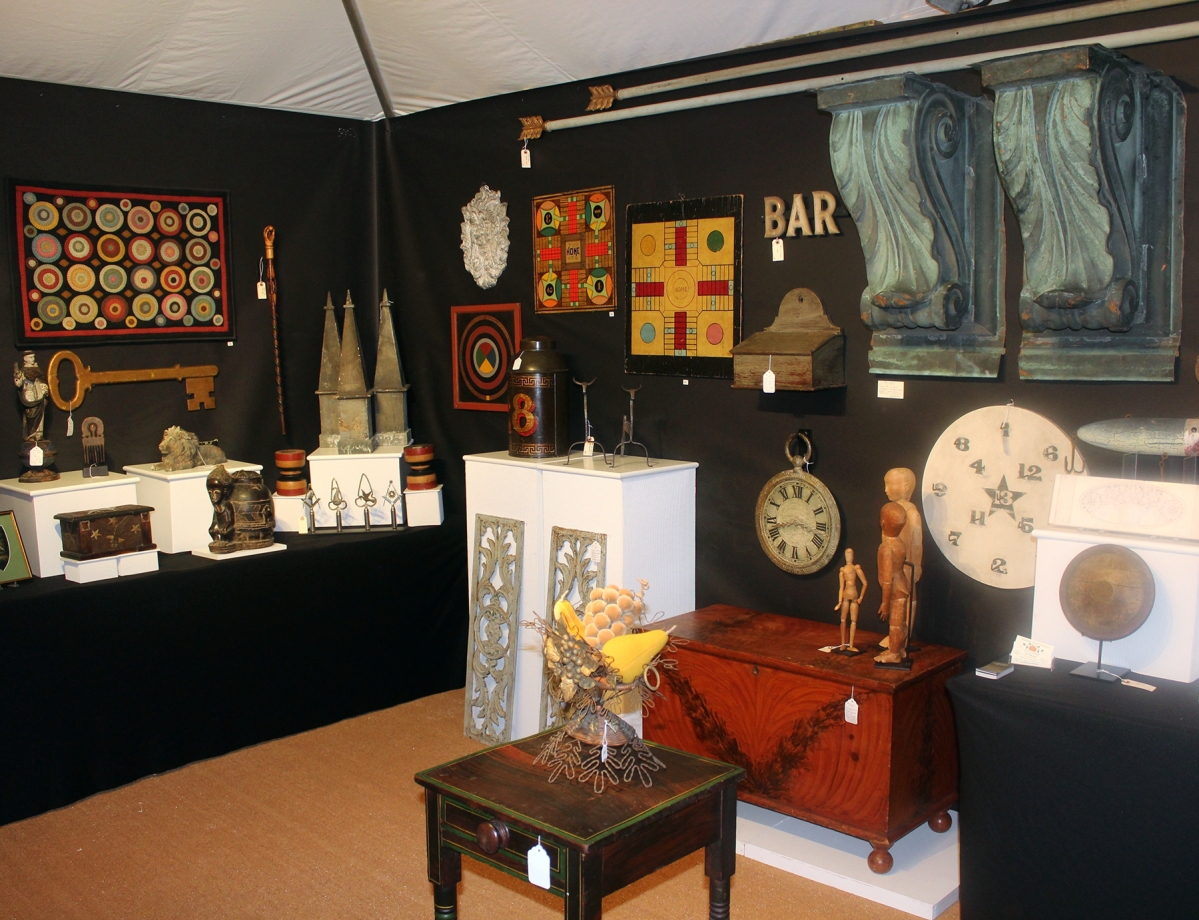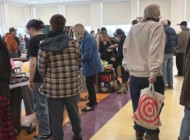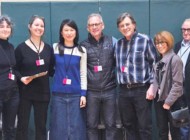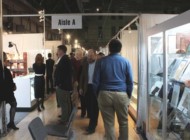Review and Photos by W.A. Demers
WILTON, CONN. – A little housekeeping was in order.
The Wilton Historical Society, beneficiary for so many years of the large, multi-dealer antiques shows that ran at the Wilton High School field house, needed a replacement event for its spring benefit. But how to design it? And where to conduct it, given that the school’s schedule was so difficult to work with? And what should it offer, given that tastes and styles have changed so dramatically among the younger homeowners who increasingly reside in this affluent part of Fairfield County?
Karen DiSaia, manager of the successful New York Botanical Garden Show, among others, took one of the society’s key missions – presenting “objects that have a story to tell” – and conceptualized a different kind of show, one that, in her words, would “put the spotlight on amazing objects.” These are the one-of-a-kind pieces that can transform one’s garden and home, giving distinct style and visual pop.
There was plenty of eye-popping fare at the June 1-3 Objects of Desire show, conducted inside the society’s complex of Eighteenth and Nineteenth Century buildings and a series of connected tents. To be sure, there were antiques, but there were also unique items that were perhaps only 30 to 40 years old, objects made by artisans or artists, and most importantly, things that even novice collectors could find to enhance their homes. There were garden accents, furniture, accessories, found objects and art, all presented by more than 25 top dealers.
The fun began almost instantly as one hung a left at the show’s entrance. Here, Jeff Cooley and Kevin Rita shared a space that was filled with compelling flat and sculptural fine art. A couple of walls displayed the result of a visit by Mike Theise to The Cooley Gallery in Old Lyme, Conn., more than 20 years ago to show the dealer a trunkful of trompe l’oeil canvases. Many of Theises’s canvases feature his favorite subject – money. It is the pun-filled subject of a current show at Cooley’s gallery, “Michael Theise: The Art of Trompe L’oeil.”
A playful note was also struck in the booth of Phyllis Carlson and Tim Stevenson. The Manchester Center, Vt., dealers brought a set of Punch & Judy puppets that were American or English, early Twentieth Century, and a colorful pair of late 1800s theatrical signs with the legends “Salon Pour Messieurs” and “Coupe Pour Dames.” Another highlight here was a Chinese silk scroll, 9 by 40 inches, circa 1870-1900, featuring three hand-joined sections of silk needlework of colorful birds with a border of embroidered insects.
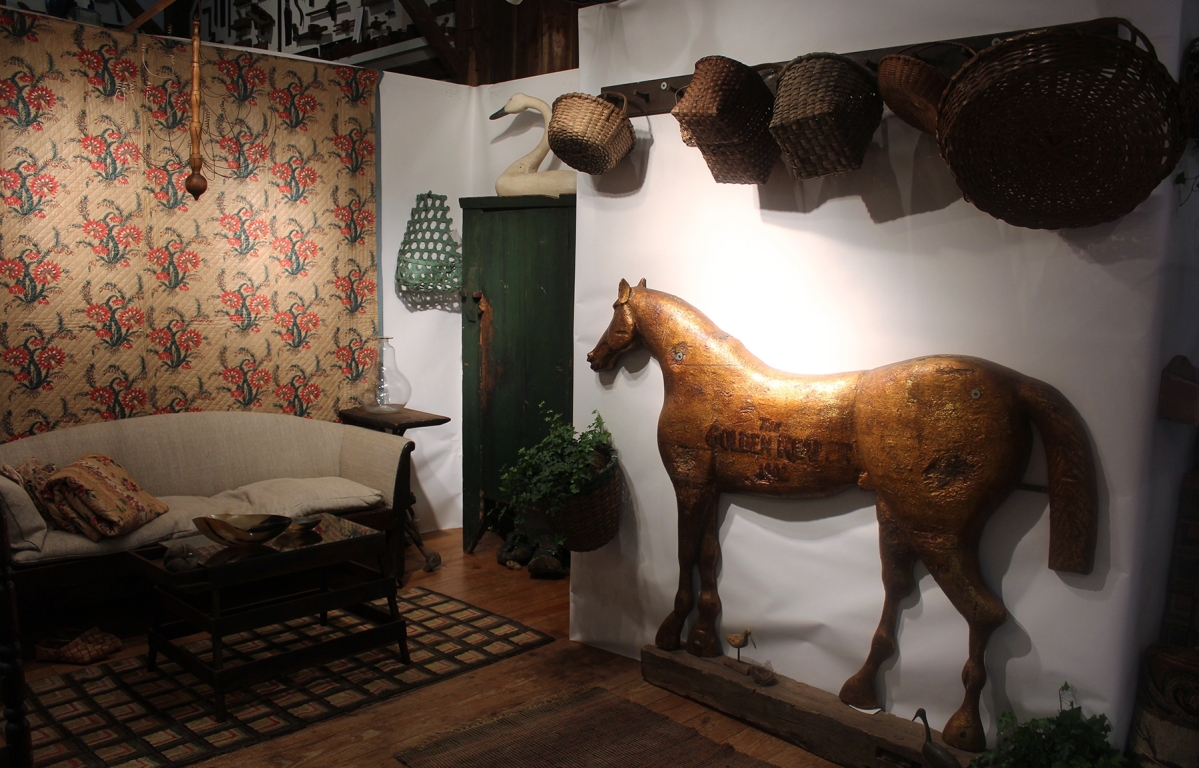
When Colette Donovan, a Merrimacport, Mass., dealer, walked into a small town antiques show 15 years ago, she jumped on acquiring the large, three-dimensional horse sign for The Golden Reaper Inn, dated 1802. She has only shown it once or twice and knew it would be a natural for this show.
In The Barn, Tom Jewett and Butch Berdan were set up, featuring a wonderful Nineteenth Century hooked rug with florals and a pair of dogs that, providentially for the dealers, fit almost perfectly between two of the wall’s vertical beams, Measuring 93 by 40 inches, the textile had been professionally cleaned and mounted. The Newcastle, Maine, dealers also brought a six-board blanket box in original vinegar decoration of an abstract design; an Art Deco aluminum eagle from Hartford, Conn., circa 1920s-30s; and a carved figure from Newport, R.I., circa 1820, by Boston ship carvers the Skillin Brothers.
Also in this space was Colette Donovan, the early American country furniture and textiles specialist from Merrimacport, Mass. Donovan recounted her own tale of an encounter with an object of desire, when, 15 years ago, she walked into a small town antiques show and was immediately captivated by a large, three-dimensional horse that had served as a sign for The Golden Reaper Inn, dated 1802. She said she has only shown the steed, possibly found in a New Hampshire barn and exhibiting traces of real gold leaf, once or twice. She knew it would be a natural for this show. An early wooden baby crib repurposed into a fetching coffee table was also on view.
A good example of something that was not an antique, yet clearly desirable, was a contemporary wood and metal rooster weathervane by Jim Clark that was in the booth of Mad River Antiques, North Granby, Conn. Clark, from Fort Worth, Texas, is a nationally recognized folk artist whose works are on view in places like the Atlanta airport and the Georgia Museum of art. Mad River owners Steve and Lorraine German also pointed to an original poster from the 1980 Lake Placid Olympics, featuring its signature raccoon mascot, and among their stock in trade stoneware, a 6-gallon crock with large standing deer, marked J&E Norton, Bennington, Vt., that dated between 1850 and 1859.
The Bassins, Ron and Joyce, lived in Tokyo, Japan, for four years. While there, they had the opportunity to acquire some items on the Japanese economy, and they were showing them here. One was a remarkable silk wedding kimono, a tour-de-force of florals and birds wrought in silver and gold silk thread and with a bright red lining. The kimono hung in the Florham Park, N.J., dealers temporary home in Japan for four years, and it hung on their booth wall during the show, attracting admiring gazes. The Bassins also brought a pair of Meiji period hibachis, Japanese pots used for cooking. The kimono and pots were out of the ordinary for the dealers of mostly Eighteenth and Nineteenth Century American antiques, especially decorated stoneware, waterfowl decoys, folk art, painted and original surface furniture and Grenfell mats.
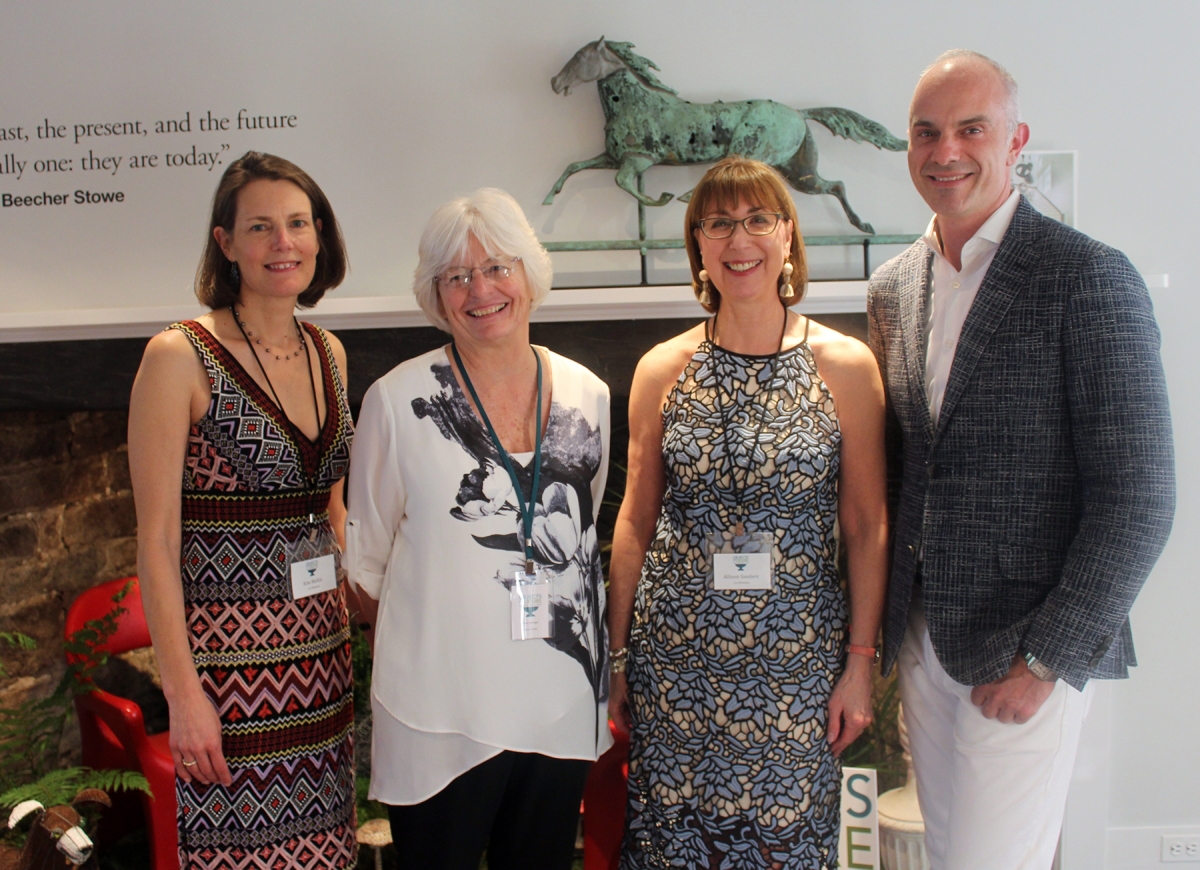
From left, Kim Mellin, the historical society’s co-executive director; show manager Karen DiSaia; Allison Sanders, co-executive director; and Phillip Thomas, design chair.
Also showing in the Burt Barn Gallery along with the Bassins was Marty Anderson, a Galena, Md., dealer who brought a real interesting relic from the US Prohibition period, which ran through the 1920s until 1933. Closed, the golden oak case piece looked like a run-of-the-mill dresser with a serpentine front and three drawers. But as Anderson revealed, the front was false, concealing a mechanism to swing out an ample storage space for the banned intoxicants. The drawers worked, but they were designed to be narrow. Anderson said she has had the one-of-kind piece for some 20 years and had found it in Delaware. Other highlights were a table lamp constructed from a 1930s heater lamp with original, one-of-a-kind shade, made with glass jewels, chandelier prisms, tie backs, salt cellars and handmade glass ornaments. A turn-of-the-century Christmas tree stand of walnut featured eight segmented cubbies, presumably to make sure each child – in an eight-child family – could find his or her own presents under the tree on Christmas morning.
The two dealers known for their “hefty” material – Bruce Emond of the Village Braider, Plymouth, Mass., and Bob Withington, Portsmouth, N.H., were set up under the portico facing the society’s Sloan House and in sight of traffic streaming by on Route 7. “No dateline,” said Emond, as he pointed to a contemporary set of six aluminum Windsor chairs by Belknap of North Carolina, a sawbuck work table from about 1910 and a pair of lions found in Cornwall, Conn., that were English or Italian, Eighteenth/Nineteenth Century. A pair of wire form flamingos and a 1960s studio stoneware piece were immediately scooped up by the show’s design chair Phillip Thomas.
For his part, Withington showed a pair of Japanese carved cranes, circa 1880; a pair of sunburst mirrors, circa 1940s-50s, with great surface; and a French terracotta console table with a wood top.
Old Lyme, Conn., dealers Lee Hanes and Joy Ruskin Hanes are known for their Eighteenth and early Nineteenth Century American high-style country furniture and period accessories. They showed plenty of these, but in keeping with the show’s spirit, they also offered what Joy described as “non-antiques,” but cool things nonetheless. These included a pair of watercolors created by her artist neighbor, channeling the style of French artist Henri Matisse, an Antonio Jacobsen-like portrait of the ship Virginia done in the late Twentieth Century by an R. Nickerson and a contemporary “sailor’s valentine” in a footed early Nineteenth Century bird’s-eye maple sewing box.
James and Judith Milne rose to the show’s theme by offering a folky and unique mirror whose surround comprised old wooden shoe lasts from the 1920s; a fabulous and expressive bulldog of cast stone, circa 1950; and melon-form planters.
For information, www.disaiamanagement.com, 860-980-0076, www.wiltonhistorical.org or 860-908-0076.

